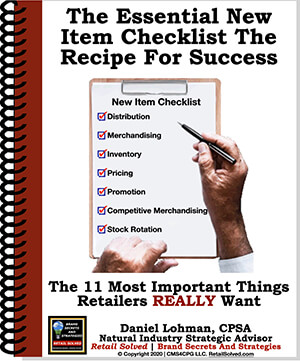The category role identifies the importance of the category to the retailer. This is the role the retailer wants the category to play within their store. A category can be used to bring new consumers into the store, increase foot traffic, support routine shopping needs, be a destination for seasonal/ occasional purchases, a one-stop-shop, or for convenience. Retailers may assign different roles to categories within their stores depending on the customers they want to attract.
Manufacturers should work closely with retailers to develop strategies to increase foot traffic in their stores.
Category roles are a great way of developing specific strategies to target customer needs. For example, the retailer might want to be known as the best store to support all of the needs of new parents. In this example, the retailer would stock a wide variety of baby and infant products across several product segments. Their selection would be better than their competition, differentiating them in their market.
Sometimes roles vary within a category. The retailer might want to be the low price leader in certain segments within the category to draw shoppers into their store; for example, the lowest everyday price on baby food in the market. They would then earn a higher margin on complementary items like baby clothes, soaps, and shampoos, lotions and creams, etc.
There are several different types of category roles retailers can choose from. The most popular category roles are destination, preferred routine, routine, seasonal/occasional, and convenience.
5 Retail Strategies
The destination category is a category that the retailer uses to take a leadership role in the market. The destination category communicates the retailer’s commitment to meet the specific needs of consumers. It delivers consistent superior value to target shoppers. It is used to define the target consumers image of the retailer for the market. For example, the retailer might want to be known as the preferred destination for ready-to-eat meal solutions. Their deli would then be well stocked with a wide variety of prepared meals and side dishes. The destination category draws shoppers to the store where they can do the rest of their shopping when they come in for their dinner.
The preferred routine role for a category is used to help define the retailer as the preferred choice by delivering consistent superior value to the target consumer. This is the trusted retailer that consumers go to when they try to fill specific needs. For example, a retailer who is committed to having the best quality produce in the market. Produce is a routine purchase for consumers but produce selection can vary greatly by retailer. Retailers can differentiate themselves by offering the best local and regional produce in the market.
The routine category is designed to assist in building the target consumers image of the retailer. A routine category serves as a link between the retailer and the consumer. This would include most of the “routine” items found at a retailer that consumers typically put on their shopping list.
A seasonal/occasional role for a category is focused on specific events, for example, Mother’s Day. An example of this would be the floral department. Retailers typically place a great deal of emphasis on the floral department on Mother's Day by increasing their selection, inventory, and gift ideas.
The convenience role is geared toward filling impulse needs. This category strategy typically plays an important role delivering profit and margin enhancement. An example of this is the ready-to-eat meals in the deli, and the chilled single serve beverages at the checkout lines.
Category rules are an important part of the retailer strategy to satisfy shopper needs and differentiate themselves from their competition.

Want A Competitive Edge? The Recipe For Success
New product innovation is the lifeblood of every brand. New products fuel sustainable growth, attract new shoppers and increase brand awareness. Know the critical steps to get your product on more retailer’s shelves and into the hands of more shoppers.
Empowering Brands | Raising The Bar
Ever wish you just had a roadmap? Well, now you do!
Don’t miss out on all of these FREE RESOURCES (strategic downloadable guides, podcast episodes, list of questions you need to be asking, and know the answers to, the weekly newsletter, articles, and tips of the week. You will also receive access to quick and easy online courses that teach you how to get your brand on the shelf, expand distribution, understand what retailers REALLY want, and address your most pressing challenges and questions.
All tools that you can use, AT NO CHARGE TO YOU, to save you valuable time and money and grow your sales today!
Image is the property of CMS4CPG LLC, distribution or reproduction is expressively prohibited.



